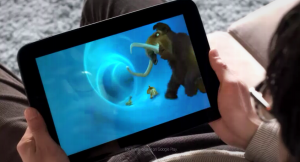Android developers can use the Google Nexus 10 as a testing device
 If CES 2013 and other major trade shows are of any indication, a plethora of Android devices are launched on a frequent basis, sporting different display configurations. For consumers that may not mean much (aside from which device to get next), but developers have to verify if apps are rendered properly across different resolutions and pixel densities. But buying all available smartphones and tablets is not a financially-sound decision, when a Google Nexus 10 gets the job done by itself.
If CES 2013 and other major trade shows are of any indication, a plethora of Android devices are launched on a frequent basis, sporting different display configurations. For consumers that may not mean much (aside from which device to get next), but developers have to verify if apps are rendered properly across different resolutions and pixel densities. But buying all available smartphones and tablets is not a financially-sound decision, when a Google Nexus 10 gets the job done by itself.
The Samsung-made tablet sports a large 10.1-inch display featuring a whopping 2560 by 1600 resolution and a 300 ppi density. As a result, according to Adam Powell, working as Android framework engineer at Google, the Nexus 10 can be used by app developers to test user interfaces in "pretty much all environments". The question is: "How?"
The Android SDK (software development kit) must be installed in order to fiddle with the resolution and display density on the Google Nexus 10. Using the adb tool included in the Android SDK, developers can run two commands (in a command prompt or terminal) in order to modify the above mentioned parameters.
The "adb shell am display-size" changes the resolution and the "adb shell am display-density" modifies the display density. Afterwards, Android adjusts to the new configuration and displays the emulated user interface accordingly. In order to revert to the default setup, "reset" must be used as the resolution and density argument depending on which value was previously modified, and a reboot might be in order as well.
In a similar manner, other devices, such as the Google Nexus 7 for instance, can be used to test app rendering, albeit with a more limited focus due to hardware limitations if the display specs do not top those of the Google Nexus 10.